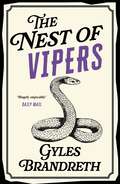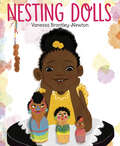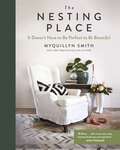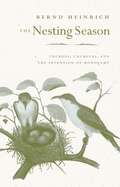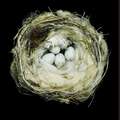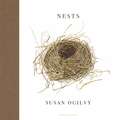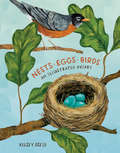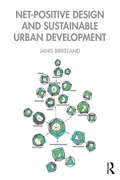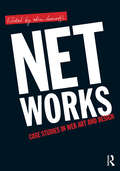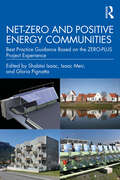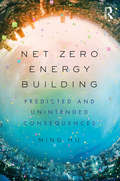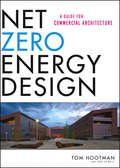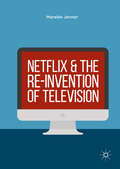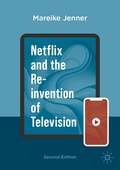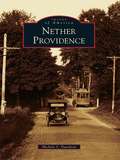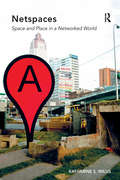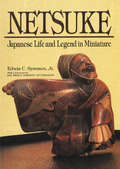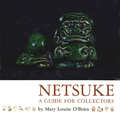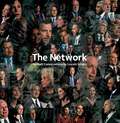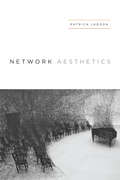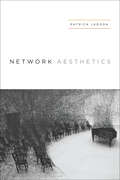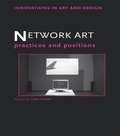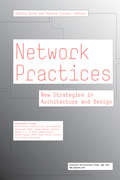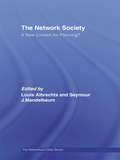- Table View
- List View
The Nest of Vipers: The Victorian Murder Mystery Series: 4 (The Victorian Murder Mystery Series #4)
by Gyles Brandreth'A ripping yarn . . . A wonderful period murder mystery' Reader review ⭐⭐⭐⭐⭐'What a whizbang, intelligent fun read! . . . A delight' Reader review ⭐⭐⭐⭐⭐Society truly can be murder . . .1890: Famous author Oscar Wilde is a guest at a glamorous, high-society party hosted by the Duke and Duchess of Albemarle - even the Prince of Wales has turned up for the festivities. But the evening ends in tragedy when the Duchess is found murdered.No one apart from the invited guests have entered the house; no one has left. And it is only Wilde and his friend Arthur Conan Doyle, author of Sherlock Holmes, who have seen the puncture marks on the Duchess's neck . . . Desperate to avoid another scandal, the Prince appeals to the two writers to investigate the crime and protect the reputation of the royal family.But as they investigate further, the eerie details of the case threaten to pull them into a darker plot than they could have ever imagined . . .A wonderfully witty and gripping cosy historical mystery that will send tingles up your spine. Perfect for fans of Sherlock Holmes, Agatha Christie and Richard Osman.Readers are gripped by The Nest of Vipers:'A real rollicking read . . . Entertaining on so many levels' Reader review ⭐⭐⭐⭐⭐'The fact that I read this book cover to cover in only a couple of sittings, tells you just how much I enjoyed every moment . . . It has my highest recommendation' Reader review ⭐⭐⭐⭐⭐'Another cracking Oscar Wilde mystery . . . A fast-moving novel and one I found hard to put down. Highly recommended' Reader review ⭐⭐⭐⭐⭐'This historical mystery is head and shoulders above most of the competition in its field, elegantly written and paced . . . I'm hooked' Reader review ⭐⭐⭐⭐⭐'Very funny, great yarn. Love the historical mystery incorporating' Reader review ⭐⭐⭐⭐⭐
Nesting Dolls
by Vanessa Brantley-NewtonA heartwarming picture book about how one little girl's unique beauty has been growing for generations in her family tree.Anyiaka is in awe of her gorgeous Gullah Geechee family—she wants to be beautiful like her older sister, Sorie, a great listener like her mom, and a talented artist like her grandma. But on today's visit to her grandparents&’ house, Anyiaka sticks out from the rest of the family like a sore thumb. She can't seem to do anything right, and a trip to Grandma's art studio confirms just how different she is from the rest of the family.But Grandma&’s artwork—a special set of nesting dolls—also shows that what&’s on the outside doesn&’t always tell the whole story. While they may be distinct, together, her family&’s beauty and inner strength have deep roots that have been growing within each of them for generations.
The Nesting Place: It Doesn’t Have to Be Perfect to Be Beautiful
by Myquillyn SmithPerfection is overrated. Popular blogger and self-taught decorator Myquillyn Smith (The Nester) is all about embracing reality—especially when it comes to decorating a home bursting with boys, pets, and all the unpredictable messes of life.In The Nesting Place, Myquillyn shares the secrets of decorating for real people—and it has nothing to do with creating a flawless look to wow your guests. It has everything to do with embracing the natural imperfection and chaos of daily living.Drawing on her years of experience creating beauty in her 13 different homes, Myquillyn will show you how to think differently about the true purpose of your home and simply and creatively tailor it to reflect you and your unique style—without breaking the bank or stressing over comparisons. Full of easy tips, simple steps, and practical advice, The Nesting Place will give you the courage to take risks with your home and transform it into a place that’s inviting and warm for family and friends.There is beauty in the lived-in and loved-on and just-about-used-up, Myquillyn says, and welcoming that imperfection wholeheartedly just might be the most freeing thing you’ll ever do.
The Nesting Season: Cuckoos, Cuckolds, and the Invention of Monogamy
by Bernd HeinrichWhy are the eggs of the marsh wren deep brown, the winter wren's nearly white, and the gray catbird's a brilliant blue? And what in the DNA of a penduline tit makes the male weave a domed nest of fibers and the female line it with feathers, while the bird-of-paradise male builds no nest at all, and his bower-bird counterpart constructs an elaborate dwelling? These are typical questions that Bernd Heinrich pursues in the engaging style we've come to expect from him supplemented here with his own stunning photographs and original watercolors. One of the world's great naturalists and nature writers, Heinrich shows us how the sensual beauty of birds can open our eyes to a hidden evolutionary process. Nesting, as Heinrich explores it here, encompasses what fascinates us most about birds from their delightful songs and spectacular displays to their varied eggs and colorful plumage; from their sex roles and mating rituals to nest parasitism, infanticide, and predation. What moves birds to mate and parent their young in so many different ways is what interests Heinrich and his insights into the nesting behavior of birds has more than a little to say about our own.
Nests: Fifty Nests and the Birds That Built Them
by Sharon BealsSharon Beals' gorgeous photographs of nests offer a new window onto the life and beauty of birds. Drawn from the collections of the California Academy of Sciences, the Museum of Vertebrate Zoology at UC Berkeley, and the Western Foundation of Vertebrate Zoology, these birds' nests from around the world offer astonishing insight into the intricate detail wrought by nature's most fastidious architects. Lovely images of nests and eggs are set against rich black backgrounds, and are accompanied by fascinating and informative portraits--conveyed through words and illustrations--of the birds that built them. A beautiful volume, Nests is the perfect gift for birders, bird lovers, and anyone captivated by the fleeting and fascinating splendor of the natural world.
Nests
by Susan OgilvyAn exquisitely illustrated, one-of-a-kind celebration of the hidden beauty of nature and the ingenuity of birdsSusan Ogilvy started painting bird nests almost by accident. One day, while tidying up her garden after a storm, she found a chaffinch nest - a strange, sodden lump on the grass under a fir tree. She carried it inside and placed it on a newspaper; over the next few hours, as the water drained out of it, the sodden lump blossomed into a mossy jewel. She was amazed, and dropped everything to make a painting of the nest at exact life size.This was the start of an obsession; Ogilvy has since painted more than fifty bird nests from life, each time marvelling at its ingenious construction. Every species of bird has its own vernacular, but sources its materials - most commonly twigs, roots, grasses, reeds, leaves, moss, lichen, hair, feathers and cobwebs, less usually, mattress stuffing and string - according to local availability. Ogilvy would, of course, never disturb nesting birds; instead she relies upon serendipity, which is why all her nests have either been abandoned after fulfilling their purpose, or displaced by strong winds.Although Nests showcases the specimens she has found near her homes in Somerset and on the Isle of Arran, its subject matter is by no means only British, since these same birds can be found all over Europe, Scandinavia and as far afield as Russia, Turkey and North Africa. This wondrous book is all the more special for its rarity. Few modern books exist specifically on the subject of bird nests; the most recent among the author's reference works was published in 1932. Exquisitely designed and packaged, Nests will be an essential addition to the libraries of all nature lovers.
Nests, Eggs, Birds: An Illustrated Aviary
by Kelsey OseidDiscover the world's birds, their homes, and their eggs in this gorgeously illustrated, entertaining, and educational guide.Did you know that the tailorbird "sews" leaves together to make its nest? Or that hummingbird eggs are the size of jellybeans? Birds are some of the world's most beautiful and interesting creatures, and their nests and eggs are no exception, displaying a stunning diversity of shapes, sizes, functions, and materials. In Nests, Eggs, Birds, celebrated artist and author Kelsey Oseid explores the fascinating ins and outs of where and how dozens of avian species--robins, birds of paradise, crows, owls, penguins, and more--make their homes and lay their eggs. Full of striking naturalistic art and fun scientific facts, Nests, Eggs, Birds will delight bird lovers of all ages.
Net-Positive Design and Sustainable Urban Development
by Janis Birkeland‘Sustainable’ urban planning, policy and design professes to solve sustainability problems, but often depletes and degrades ever more resources and ecosystems and concentrates wealth and concretize social disparities. Positive Development theory holds that development could create more net ecological and social gains than no construction at all. It explains how existing conceptual, physical and institutional structures are inherently biased against the preservation and expansion of social and natural life-support systems, and proposes explicit reforms to planning, design and decision making that would enable development to increase future options and social and natural life-support systems – in absolute terms. Net-Positive Design and Sustainable Urban Development is aimed at students, academics, professionals and sustainability advocates who wonder why existing approaches have been ineffective. It explains how to reform the anti-ecological biases in our current frameworks of environmental governance, planning, decision making and design – and suggests how to make these changes. Cities can increase both the ‘public estate’ (reduce social stratification, inequity and other causes of conflict, increase environmental quality, wellbeing and access to basic needs, etc.); and the ‘ecological base’ (sequester more carbon and produce more energy than used during construction and operation, increase ecological space to support ecological carrying capacity, ecosystem functions and services, restore the bioregions and wilderness, etc.). No small task, this new book provides academic theory and professional tools for saving the planet, including a free computer app for net-positive design.
Net Works: Case Studies in Web Art and Design
by Xtine BurroughNet Works offers an inside look into the process of successfully developing thoughtful, innovative digital media. In many practice-based art texts and classrooms, technology is divorced from the socio-political concerns of those using it. Although there are many resources for media theorists, practice-based students sometimes find it difficult to engage with a text that fails to relate theoretical concerns to the act of creating. Net Works strives to fill that gap. Using websites as case studies, each chapter introduces a different style of web project--from formalist play to social activism to data visualization--and then includes the artists' or entrepreneurs' reflections on the particular challenges and outcomes of developing that web project. Scholarly introductions to each section apply a theoretical frame for the projects. A companion website offers further resources for hands-on learning. Combining practical skills for web authoring with critical perspectives on the web, Net Works is ideal for courses in new media design, art, communication, critical studies, media and technology, or popular digital/internet culture.
Net-Zero and Positive Energy Communities: Best Practice Guidance Based on the ZERO-PLUS Project Experience
by Shabtai Isaac Isaac Meir Gloria PignattaThis book presents a methodology for the design, construction, monitoring, optimization, and post-occupancy evaluation of net-zero and positive-energy communities based on the experiences gained in the EU Horizon 2020 ZERO-PLUS project. It describes the steps, tools, and methods developed during the project, providing practical information for the energy and construction sector that will be of interest to students, engineers, architects, developers, and professionals working around high performance architecture and sustainable communities. Through the ZERO-PLUS project, a consortium of 32 partners from eight countries, including academic institutions, technology providers, architects, and construction companies, designed four communities covering completely different geo-climatic regions, construction practices, and cultural backgrounds in Cyprus, Italy, France, and the UK. The communities were designed, optimized, constructed, monitored, handed over to tenants, post-occupancy evaluated, and troubleshooted through a system of continuous collaboration and data acquisition. This book presents these case studies and shows how the project targets of reducing electricity consumption below 20 kWh/m2/y, increasing electricity production from Renewable Energy Systems to over 50 kWh/m2/y, and at cheaper costs when compared to current zero-energy buildings were reached and surpassed. These cases demonstrate that a holistic and interactive approach to design and construction can bring communities a high standard of sustainability. The key features of the book include: • Practical guidance drawn from the interdisciplinary, international, and remote cooperation between experts from academia and industry across the construction sector. • A survey of the state-of-the-art on net-zero and positive-energy communities, including the experience and the lessons learned from previous projects and from the ZERO-PLUS project. • Descriptions of novel emerging renewable energy technologies, integrated into real case study communities to achieve the energy generation target of the communities. • A comprehensive set of approaches, tools, guidelines, best practices, challenges, and lessons learned from the five-year ZERO-PLUS project and the completion of four residential case studies to inform the reader of how to achieve affordable net-zero energy communities. • Four typologies of residential communities located in different climatic conditions are presented, touching on the critical aspects of the design, construction, monitoring, and occupancy phase • A discussion of future trends for developing communities that are more liveable, accessible, and sustainable and which can comply with new energy policies in a way that is affordable for the owners and residents.
Net Zero Energy Building: Predicted and Unintended Consequences
by Ming HuWhat do we mean by net zero energy? Zero operating energy? Zero energy costs? Zero emissions? There is no one answer: approaches to net zero building vary widely across the globe and are influenced by different environmental and cultural contexts. Net Zero Energy Building: Predicted and Unintended Consequences presents a comprehensive overview of variations in 'net zero' building practices. Drawing on examples from countries such as the United States, United Kingdom, Germany, Japan, Hong Kong, and China, Ming Hu examines diverse approaches to net zero and reveals their intended and unintended consequences. Existing approaches often focus on operating energy: how to make buildings more efficient by reducing the energy consumed by climate control, lighting, and appliances. Hu goes beyond this by analyzing overall energy consumption and environmental impact across the entire life cycle of a building—ranging from the manufacture of building materials to transportation, renovation, and demolition. Is net zero building still achievable once we look at these factors? With clear implications for future practice, this is key reading for professionals in building design, architecture, and construction, as well as students on sustainable and green architecture courses.
Net Zero Energy Design
by Thomas HootmanConveniently organized and packed with robust technical content and clear explanations of key principlesWritten by an architect who is the director of sustainability at a global architecture firm, Net Zero Energy Design is a practical guide for architects and related construction professionals who want to design and build net zero energy commercial architecture. It offers no-nonsense strategies, step-by-step technical analysis, and valuable examples, in addition to developed case studies. With a focus on application in a variety of building types and scales, the book also develops a broad-based understanding of all the integrated principles involved in achieving net zero energy.This book is an indispensable resource for anyone venturing into net zero energy design, construction, and operation, and it also serves as an excellent resource on a variety of sustainable design topics. Important features include:Organization based upon the commercial building delivery processRobust technical content for use in actual project applicationsAnalysis examples that demonstrate key technical principlesPlenty of design data for use as a valuable design resourceAbundant and sophisticated information graphics and color illustrations and photographsA distinct design focus on the content that inspires adoption of principles into projects
Netflix and the Re-invention of Television
by Mareike JennerThis book deals with the various ways Netflix reconceptualises television as part of the process of TV IV. As television continues to undergo a myriad of significant changes, Netflix has proven itself to be the dominant force in this development, simultaneously driving a number of these changes and challenging television’s existing institutional structures. This comprehensive study explores the pre-history of Netflix, the role of binge-watching in its organisation and marketing, and Netflix’s position as a transnational broadcaster. It also examines different concepts of control and the role these play in the history of ancillary technologies, from the remote control to binge-watching as Netflix’s iteration of giving control to the viewers. By focusing on Netflix’s relationship with the linear television schedule, its negotiations of quality and marketing, as well as the way Netflix integrates into national media systems, Netflix and the Re-invention of Television illuminates the importance of Netflix’s role within the processes of TV IV.
Netflix and the Re-invention of Television
by Mareike JennerThis book deals with the ways Netflix influenced the contemporary television landscape and built the infrastructures of streaming. It focusses on various ways Netflix reconceptualises television as part of the process of TV IV. As television continues to undergo a myriad of changes, Netflix has proven itself to be the dominant force in this development, simultaneously driving a number of these changes and challenging television’s existing institutional structures. This comprehensive study explores the pre-history of Netflix, the role of binge-watching in its organisation and marketing, and Netflix’s position as a transnational broadcaster. Netflix and the Re-invention of Television illuminates the importance of Netflix’s role within the processes of TV IV. This Second Edition highlights the role Netflix plays in the so-called streaming wars and incorporates recent research in television studies. It also re-evaluates the companies’ incorporation of issues of diversity in its focus on middlebrow television. The book also includes a new chapter on the transnational streaming franchise, networks of texts developed internal to platforms to build infrastructures of transnational streaming.
Nether Providence (Images of America)
by Michele S. DavidsonIn 1682, John Sharpless settled in Nether Providence Township on a 1,000-acre tract of land along Ridley Creek that had been granted to him by William Penn. Other settlers soon followed, establishing Nether Providence as a small, successful, farming community. Over the next two centuries, Nether Providence grew into a thriving manufacturing center with 14 operating mills along the township's two creeks. At the turn of the 19th century, Nether Providence became a summer resort area rivaling the Main Line of Philadelphia, with such famous residents as Dr. Horace Howard Furness, a well-regarded Shakespearean scholar and the brother of architect Frank Furness, and Alexander Kelly McClure, the owner of the Philadelphia Times and an assistant adjunct general appointed by Pres. Abraham Lincoln during the Civil War. In 2007, Wallingford, the largest community in Nether Providence, was named by Money Magazine as the ninth best place to live in the United States.
Netspaces: Space and Place in a Networked World
by Katharine S. WillisThe focus of this book is on understanding and explaining the way that our increasingly networked world impacts on the legibility of cities; that is how we experience and inhabit urban space. It reflects on the nature of the spatial effects of the networked and mediated world; from mobile phones and satnavs to data centres and wifi nodes and discusses how these change the very nature of urban space. It proposes that netspaces are the spaces that emerge at the interchange between the built world and the space of the network. It aims to be a timely volume for both architectural, urban design and media practitioners in understanding and working with the fundamental changes in built space due to the ubiquity of networks and media. This book argues that there needs to be a much better understanding of how networks affect the way we inhabit urban space. The volume defines five characteristics of netspaces and defines in detail the way that the spatial form of the city is affected by changing practices of networked world. It draws on theoretical approaches and contextualises the discussion with empirical case studies to illustrate the changes taking place in urban space. This readable and engaging text will be a valuable resource for architects, urban designers, planners and sociologists for understanding how of networks and media are creating significant changes to urban space and the resulting implications for the design of cities.
Netsuke: Japanese Life and Legend in Miniature
by HIH Prince of Takamado Edwin C. Symmes Jr.Netsuke: Japanese Life and Legend in Miniature presents over seventy full-page color photographs of netsuke in enchanting settings. The accompanying text gives technical details about the netsuke as well as interesting commentaries relating the pieces to Japanese life and legend. Information on the carvers has also been provided whenever possible.
Netsuke: Japanese Life and Legend in Miniature
by HIH Prince of Takamado Edwin C. Symmes Jr.Netsuke: Japanese Life and Legend in Miniature presents over seventy full-page color photographs of netsuke in enchanting settings. The accompanying text gives technical details about the netsuke as well as interesting commentaries relating the pieces to Japanese life and legend. Information on the carvers has also been provided whenever possible.
Netsuke: A Guide for Collectors
by Mary Louise O'Brien Margaret DhaemersFeaturing dozens of Japanese netsuke masterpieces and insightful commentary, this Japanese art book is a classic collector's item.<P><P>Netsuke: A Guide for Collectors approaches the subject of Japanese nestuke from the point of view of the amateur collector rather than that of an owner discussing his own accomplished collection.Ever since Japan's emergence a little over a century ago from her long period of seclusion under Tokugawa rule, netsuke have exerted an almost irresistible attraction for Western collectors. These tiny carvings-exquisite in detail, charming in conception, and delightful for the sheer tactual pleasure to be experienced in handling them-captivated admirers of Japanese art and craftsmanship. Basically, netsuke were utilitarian in purpose, for they were designed to serve as pendants or toggles to support medicine boxes, writing cases, smoking equipment, and similar articles worn suspended by a cord from the obi-a practical device since the kimono had no pockets. At first quite primitive in design, they soon became more and more sophisticated, and their carvers turned increasingly to the legendary of Japan and China for inspiration and subject matter.This fascinating book is a wonderful introduction to this classic Japanese art and will be invaluable for both professional collections and amateurs alike.·that she has made an invaluable contribution to this literature.
The Network: Portrait Conversations
by Lincoln SchatzAs the nation grapples with some of the greatest developments and challenges to date, The Network presents a dynamic portrait of the people who help shape America's current technology, policy, and education. Drawing inspiration from Richard Avedon's 1976 photographic portfolio, The Family, The Network consists of generative video portraits of 100 entrepreneurs, industrialists, politicians, scientists, scholars, inventors, and other influential figures, some of whom may be household names and others who operate behind the scenes, who play pivotal roles shaping the history and daily workings of America. The project builds on aspects of portraitist Lincoln Schatz's earlier project, Esquire's Portrait of the 21st Century (National Portrait Gallery, Smithsonian Institution), taking a closer look at how the touchstones of America are created and preserved.
Network Aesthetics
by Patrick JagodaThe term "network" is now applied to everything from the Internet to terrorist-cell systems. But the word's ubiquity has also made it a cliché, a concept at once recognizable yet hard to explain. Network Aesthetics, in exploring how popular culture mediates our experience with interconnected life, reveals the network's role as a way for people to construct and manage their world--and their view of themselves. Each chapter considers how popular media and artistic forms make sense of decentralized network metaphors and infrastructures. Patrick Jagoda first examines narratives from the 1990s and 2000s, including the novel Underworld, the film Syriana, and the television series The Wire, all of which play with network forms to promote reflection on domestic crisis and imperial decline in contemporary America. Jagoda then looks at digital media that are interactive, nonlinear, and dependent on connected audiences to show how recent approaches, such as those in the videogame Journey, open up space for participatory and improvisational thought. Contributing to fields as diverse as literary criticism, digital studies, media theory, and American studies, Network Aesthetics brilliantly demonstrates that, in today's world, networks are something that can not only be known, but also felt, inhabited, and, crucially, transformed.
Network Aesthetics
by Patrick JagodaThe term “network” is now applied to everything from the Internet to terrorist-cell systems. But the word’s ubiquity has also made it a cliché, a concept at once recognizable yet hard to explain. Network Aesthetics, in exploring how popular culture mediates our experience with interconnected life, reveals the network’s role as a way for people to construct and manage their world—and their view of themselves. Each chapter considers how popular media and artistic forms make sense of decentralized network metaphors and infrastructures. Patrick Jagoda first examines narratives from the 1990s and 2000s, including the novel Underworld, the film Syriana, and the television series The Wire, all of which play with network forms to promote reflection on domestic crisis and imperial decline in contemporary America. Jagoda then looks at digital media that are interactive, nonlinear, and dependent on connected audiences to show how recent approaches, such as those in the videogame Journey, open up space for participatory and improvisational thought. Contributing to fields as diverse as literary criticism, digital studies, media theory, and American studies, Network Aesthetics brilliantly demonstrates that, in today’s world, networks are something that can not only be known, but also felt, inhabited, and, crucially, transformed.
Network Art: Practices and Positions (Innovations in Art and Design)
by Tom CorbyNetwork Art brings an international group of leading theorists and artists together to investigate how the internet, in the form of websites, mailing lists, installations and performance, has been used by artists to develop artwork. Covering a period from the mid 1990s to the present day, this fascinating text includes key texts by historians and theorists such as Charlie Gere, Josephine Bosma, Tilman Buarmgartel and Sarah Cook, alongside descriptions of important projects by Thomson and Craighead, Lisa Jevbratt and 0100101110101101.org amongst many others. Fully illustrated throughout, and including many pictures of artworks never before seen in print, Network Art represents one of the first substantial attempts to place major artist's writings on network art alongside those of critics, curators and historians. In doing so it takes a unique approach, offering the first comprehensive attempt to understand network art practice, rooted in concrete descriptions of the systems and the process required to create it.
Network Practices: New Strategies in Architecture and Design
by Anthony Burke Therese TierneyThe twin revolutions of the global economy and omnipresent Internet connectivity have had a profound impact on architectural design. Geographical gaps and, in many cases, architecture's tie to the built world itself have evaporated in the face of our new networked society. Form is now conceptualized by architects, engineers, and artists as reflexive, contingent, and distributed. The collected essays in Network Practices capture this unique moment in the evolution of design, where crossing disciplines, spatial interactions, and design practices are all poised to be reimagined. With contributions by architects, artists, computer programmers, and theorists and texts by Reinhold Martin, Dagmar Richter, Michael Speaks, and others, Network Practices offers an interdisciplinary analysis of how art, science, and architecture are responding to rapidly changing mobile, wireless, and information embedded environments
The Network Society: A New Context for Planning (Networked Cities Series)
by Louis Albrechts Seymour J. MandelbaumIn a clear and rewarding style, Albrechts and Mandelbaum consider the challenges that the new paradigm of the Network Society creates for Urban and Regional Planning. Chapters grouped into five themes discuss theoretical and practical perspectives on the contemporary organization of social, economic, cultural, political and physical spaces. These sections are: models of the Network Society the impact of physical networks such as transport challenges for Planners raised by society’s increased reliance on new technology an examination of local networks including community networks and the possibilities of setting up local networks for disaster recovery a comparison of spatial and policy networks and an exploration of the institutions involved. This book is essential reading for graduate level courses in urban studies, city and regional planning, and urban design. With its clear structure – unitary sections but a diversity of perspectives – the book can be used easily in courses such as Planning Theory, Urban Infrastructure and Public Policy.
